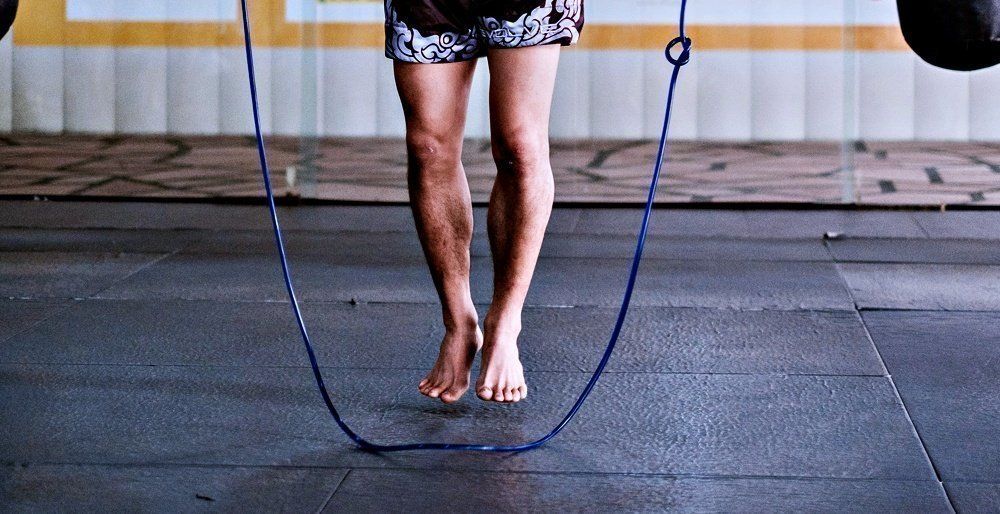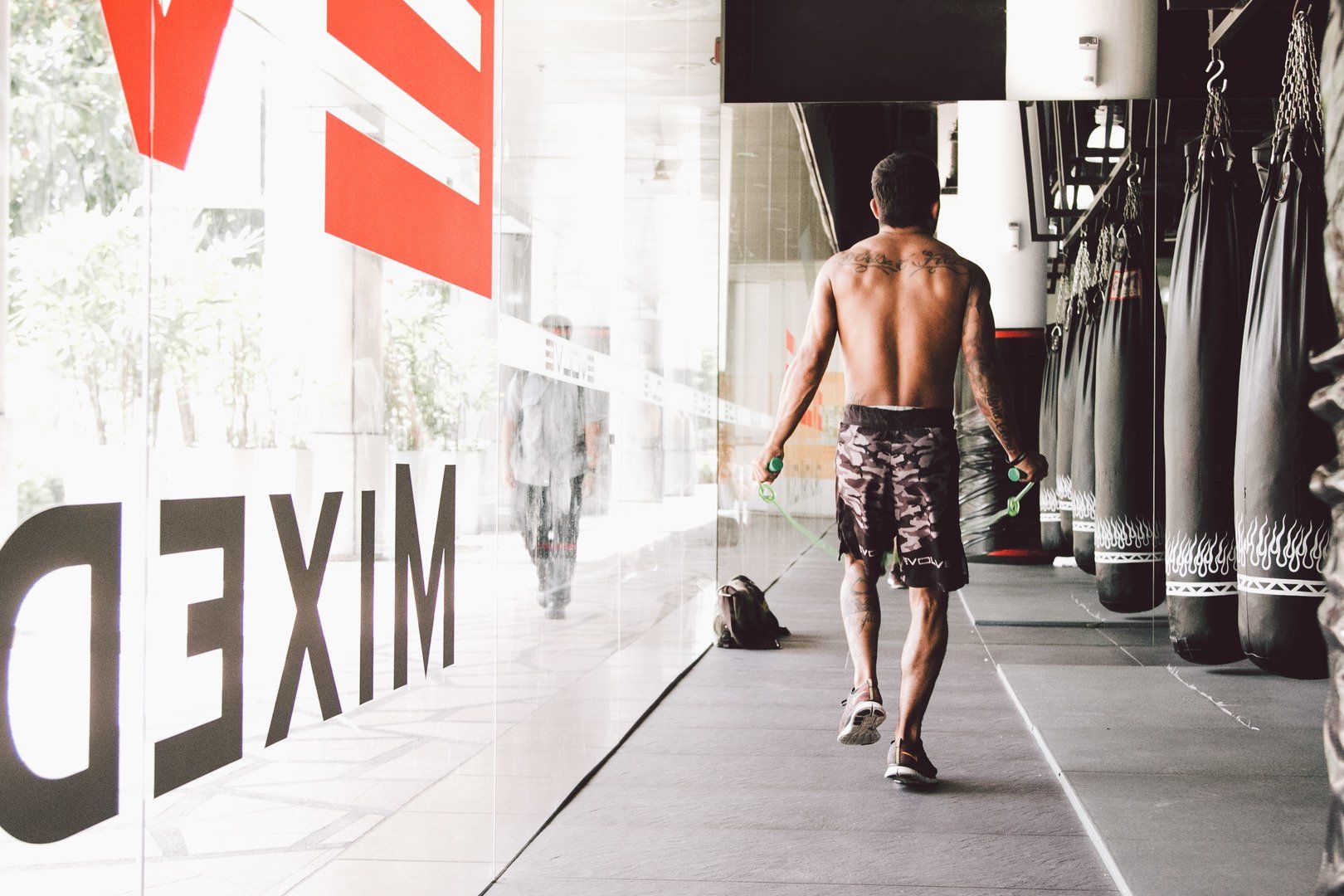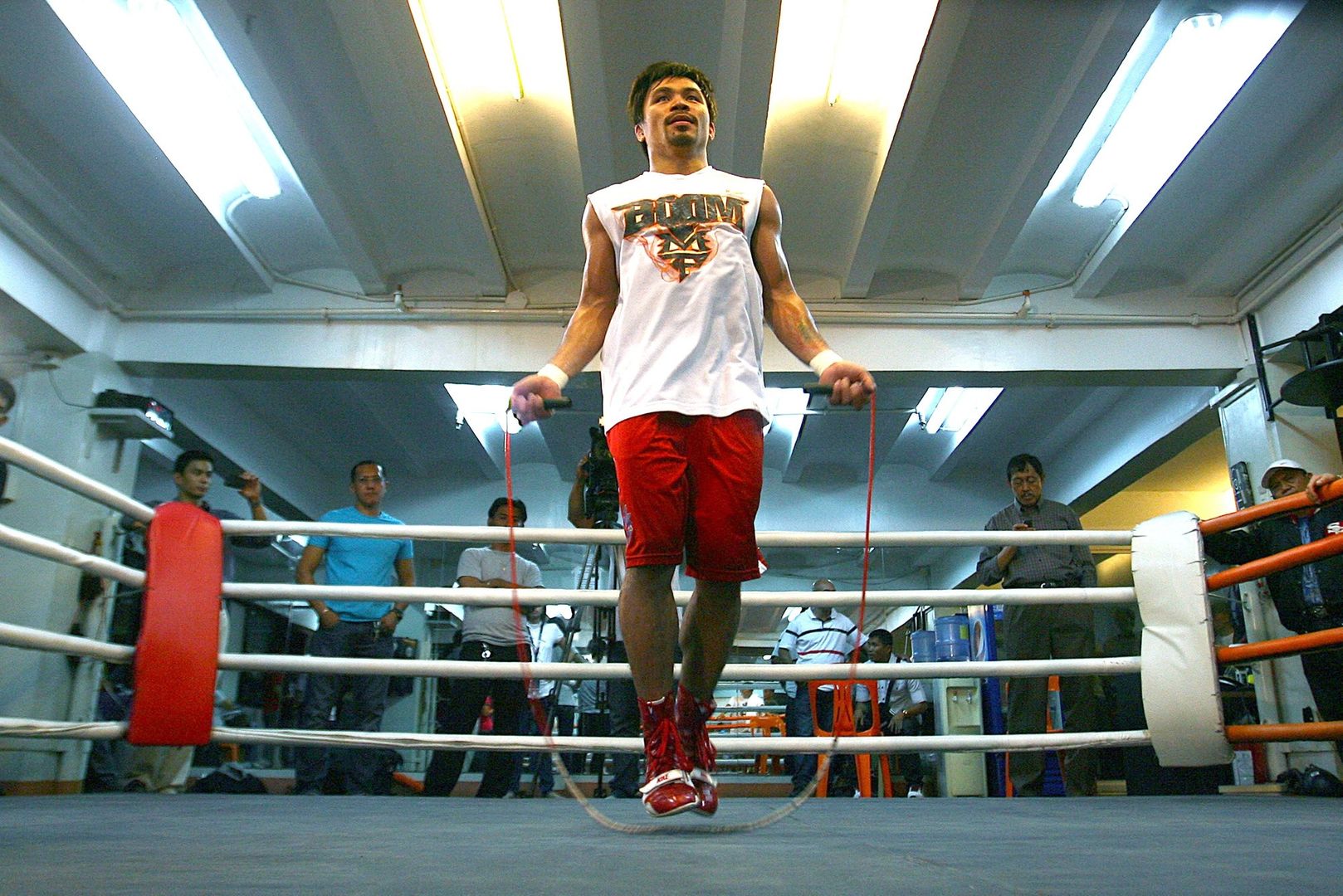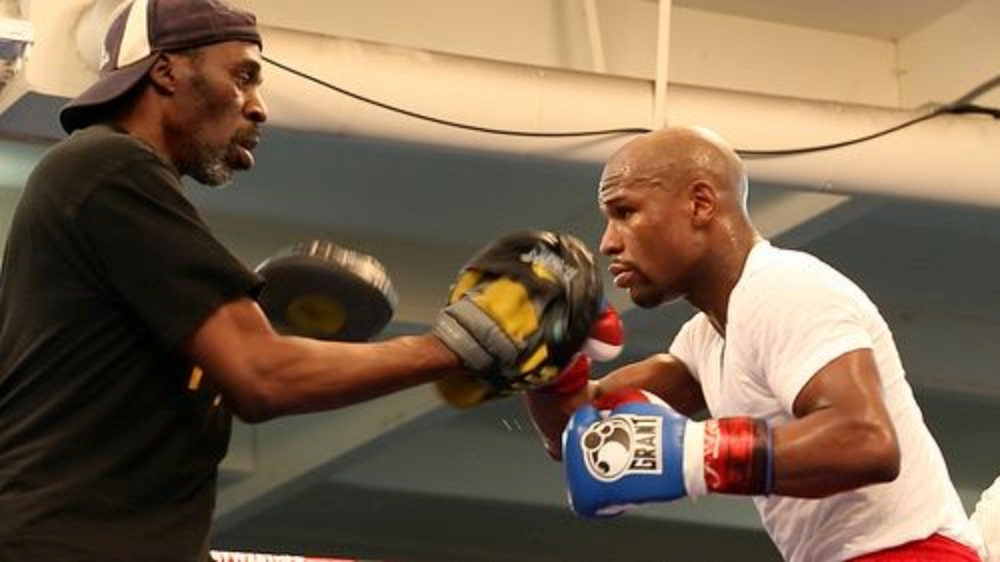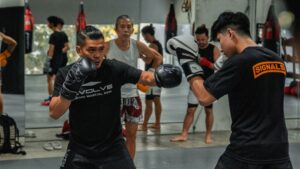The jump rope is one of the most efficient and effective training tools in boxing. There is nothing that quite replicates the unique cardiovascular challenge and rhythm of a jump rope workout.
Boxers use jump ropes for physical conditioning and for improving coordination. There are both beginner and advanced jump rope techniques, each routine offering a different challenge.
At less than $10, it is also one of the most accessible training tools you can pick up. When it comes to effectiveness and reliability, you won’t find a better training tool than the jump rope.
Jumping rope is not only an intense workout, too. It’s also a lot of fun. If you haven’t tried jumping rope yet, or haven’t factored it into your routine, here are a few reasons why we think you should really consider it. It’s definitely one of the best workouts for fighters.
Don’t know where to start? We’ve come up with a short guide to set you on the right path. Today, Evolve Daily shares the beginner’s guide to boxing jump rope workouts.
1) The Benefits
Jumping rope has many benefits, both physical and mental, but also specifically for fighters.
The intense nature of jump rope workouts improves cardiovascular endurance and stamina, allowing you to execute combinations with more power and speed. It improves hand-eye coordination and the ability to move your feet, all important traits to possess in a boxing match. It improves your breathing efficiency, which gives you a deeper gas tank. Furthermore, it also empowers you with the ability to remain calm under duress, no doubt an absolute essential in firefights.
Believe it or not, jumping rope can even improve your punching power.
Suffice to say, jumping rope is one of the best training methodologies in boxing (or in any sport for that matter). There is, however, a steep learning curve, so daily practice is key to getting better at it.
This is the most obvious benefit to jumping rope, which makes perfect sense. For most beginner boxers, leg conditioning is basically just road work, maybe a few squats here and there. But these exercises do nothing in terms of improving your lower body coordination. And we all know how important having a strong and sturdy base in boxing is.
Footwork will improve your mobility, and enhance your ability to shift your weight into your punches. This makes jumping rope a very important addition to your leg strengthening routine.
Jumping rope forces you to move your feet in a coordinated manner, conditioning your legs but at the same time, making you more aware of how you move.
2) Increased Stamina
If we’re talking about pure conditioning exercises to increase stamina, jumping rope may be unrivaled in this arena. It’s by far, at the very top of the stack, ahead of running, swimming, and arguably even High-Intensity Interval Training (HIIT).
It’s such a versatile workout. Jumping rope can simulate many different kinds of workouts. It can pose the same challenges as jogging, or sprinting, or jumping jacks. It burns in the calves and the hamstrings, engages your core as you twist your torso. You can even increase or decrease the intensity, speed, difficulty level, and rhythm of how you jump. Whether you are a boxer or not, jumping rope is really one of the best forms of exercise.
Jumping rope will also help you become more efficient with your breathing, which in turn makes you more energy efficient in the process.
3) Develop Rhythm
The main reason jumping rope is the perfect conditioning workout for boxing training is because it easily replicates the unique ebb and flow of a fight, more so than other exercises. You’re always pushed into constant motion and always jump rope with a heightened sense of awareness.
Jumping rope will improve both your mental and spatial awareness, as well as your rhythm. You gain the ability to transition smoothly from stillness to activity.
You’re constantly engaged in how your feet are moving, and the speed at which you’re jumping, because you’re trying not to trip on the rope. In a fight, this increased mental awareness will help you stay sharp and maybe evade a punch that you may not have been able to dodge if you hadn’t trained this way. It could also allow you to recognize the split second openings that tend to present themselves to attentive fighters.
4) Choosing The Right Jump Rope For Boxing
By far, the best option is the plastic speed rope with plastic handles and a 90-degree connection. Plastic because it’s light and durable material, thin, and will whizz through the air without much resistance. The 90-degree connection allows the rope to spin effortlessly, which makes the rope essentially an extension of your body.
The second best option is the plastic licorice rope, without the 90-degree connection. If the first one isn’t available, get this one. Without the 90-degree connection, however, they won’t spin as easily. These are most likely the cheapest variants you will find, and the most common option in sporting goods stores. They aren’t the best for boxing training, but they do the job and are relatively inexpensive.
Jump rope variants you would want to avoid are PVC ropes and leather ropes.
PVC ropes are usually black in color, with black padded handles. The biggest problem with PVC ropes is that they stretch when spun faster, which can interfere with your jumping rhythm and make it difficult to work with. Leather ropes, on the other hand, are heavy and slow, and won’t allow you to get the most out of your jump rope sessions.
Choosing the right length
Stand on one foot in the middle of the jump rope and extend both ends of the rope upwards. The handles should come up to your armpits. If you have unusually long arms, you will want to shorten the rope slightly.
Adjust the length of the rope accordingly by tying knots near the handles. Having the right length in your rope is very important.
5) The Basics
The best way to learn how to jump rope is to get right into it. Remember, constant daily practice is key. So strive to put in a 15-30 minute jump rope session whether as a warmup or as a cool down. The more you practice, the better you will get.
When you get tired, take a break. It can get very frustrating for beginners, but taking physical and mental breaks can help ease the frustration. Just keep trying. Once your coordination improves, and the repeated motions are stored in muscle memory, it will get easier. The sense of fulfillment when you finally “get it” is amazing.
6) Jump Rope Tips
-
Put on your headphones/earphones and listen to your favorite music. Music will motivate you and get you pumped to keep trying. Just enjoy the process. Learning how to jump rope is a journey, not a destination.
-
If you find yourself constantly tripping on the rope, try to jump without it. Just imagine you have a rope in your hands, and instead focus on the rhythm. Add the rope back in once you’re more comfortable.
-
Breathe through your nose. Don’t be a mouth breather. First of all, you don’t ever breathe through the mouth in a fight because of the mouthpiece, so train yourself to breathe through your nose while jumping rope. Secondly, breathing through the nose calms your breathing and improves your stamina.
-
Try your best to land on the balls of your feet, with a slight bend in your knees to better absorb impact and protect your joints.
-
Stand as straight as you can in the air. This will keep you well-balanced as you land.
-
Try to make your jumps shorter and faster, as opposed to jumping higher and slower. Going this way will build your unique jump rope rhythm for boxing. Also, the higher your jumps, the more energy you burn through, which makes you tired quicker.
-
Rotate the rope using just your arms and hands, and don’t involve the shoulders. Try your best to keep your shoulders in place, but loose and not tight.
-
Allow the rope to ‘smack’ the floor gently. That distinct noise can also help you with your rhythm and timing.
7) Basic Techniques
-
Single two-foot bounce – This is your basic jump rope bounce. Everyone does this for their first jump. Jump with both feet together, landing on the balls of the feet.
-
Alternating – Alternate between the left and right foot in compact jumps. You will almost be running in place somewhat.
-
Side swing – Bring the handles together and swing the rope down on one side before bringing it to the other side with the same motion.
-
Alternate double – Alternate between the left and right foot, but this time, with two compact jumps.
-
Boxing shuffle – Similar to the alternate double, but this time, take your free foot and tap it lightly on the ground after the rope has passed. It will appear like you’re jumping on both feet, but your weight is still only on one foot.
You may also like:

